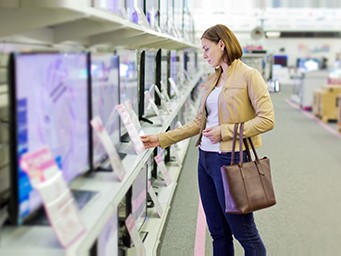
“If Amazon isn’t on the agenda at board meetings for Australian retailers, then it should be,” says David White, national leader of Deloitte’s Retail, Wholesale & Distribution Group.
Amazon is rumoured to be arriving in Australia this year, so the potential for major market disruptions is huge.
“We are already seeing several retailers setting up task forces to assess the potential impact of an Amazon market entry, but it’s not yet clear what exactly the company has planned for Australia,” says White.
“But we do know that where Amazon has entered new markets, impacts on local retailers have been seismic and across almost all categories and channels. So retailers can’t afford to wait and see what Amazon does – they need to be developing strategies and taking action now.”
Deloitte has just released its latest report, Global Powers of Retailing 2017. The report highlights that 39 of the world’s top 250 retailers now operate here and others are likely to follow.
Among the newbies to our shores: UK department stores John Lewis and Debenhams have joined forces with Myer and Harris Scarfe, and The TJX Companies Inc has acquired Trade Secret, which operates 35 outlets in Australia.
“One of the key differentiators international retailers have brought to Australia is in their store design and customer experience model, leveraging their experience from larger markets,” says White.
“With just 16% of the Top 250 retailers globally operating in Australia, and US-based retailers making up nearly 50% of that total, we can expect more new global retailers to bring their operations to our shores in 2017.
“New entrants, coupled with the threat of Amazon, should make for another fascinating year for Australian retail.
“However, we are also seeing Australian retailers slowly fighting back, with investments in store design, concept and flagship stores on the rise. So these new entrants will find Australian retailers better prepared and skilled to take on this new challenge compared to five years ago.”
White comments that last year more Australian retailers expanded their own operations into the US, Europe and Asia-Pacific although the numbers are still relatively small.
“With competition in the domestic market threatening saturation in certain categories, we can expect to see more Australian retailers take a leap of faith into overseas markets in 2017.”
5 key trends
1. Less is more. Customers are defining themselves less by how many items they own and more by curating these possessions and experiences
2. ‘Following’ economy. Customers are seeking experiences and products that reflect the personal brand they promote on social media
3. Turning the world retail. The maker movement, the sharing economy, and other factors have made it increasingly difficult to define what a retailer is and does. Non-traditional retailers are developing new business models to serve customer needs, such as subscription services and flash-sales
4. On-demand shopping and fulfilment. Relevancy will be determined by the ability of retailers to meet the on-demand mindset of the modern consumer
5. Exponential living. Exponential technologies, like artificial intelligence, robotics and virtual reality are changing how we live and how we shop.
“Over the last 20 years we have seen a seismic shift in retail and the customers that retailers serve,” says White. “We are living an era where customers are in the driver’s seat more than ever before and they crave authenticity, newness, convenience, and creativity. We are living in the customer-driven economy.”
- Want to stay ahead in retail? Check out the Inside Retail Live event coming up soon, it’s a three-day festival of ideas with international speakers.

